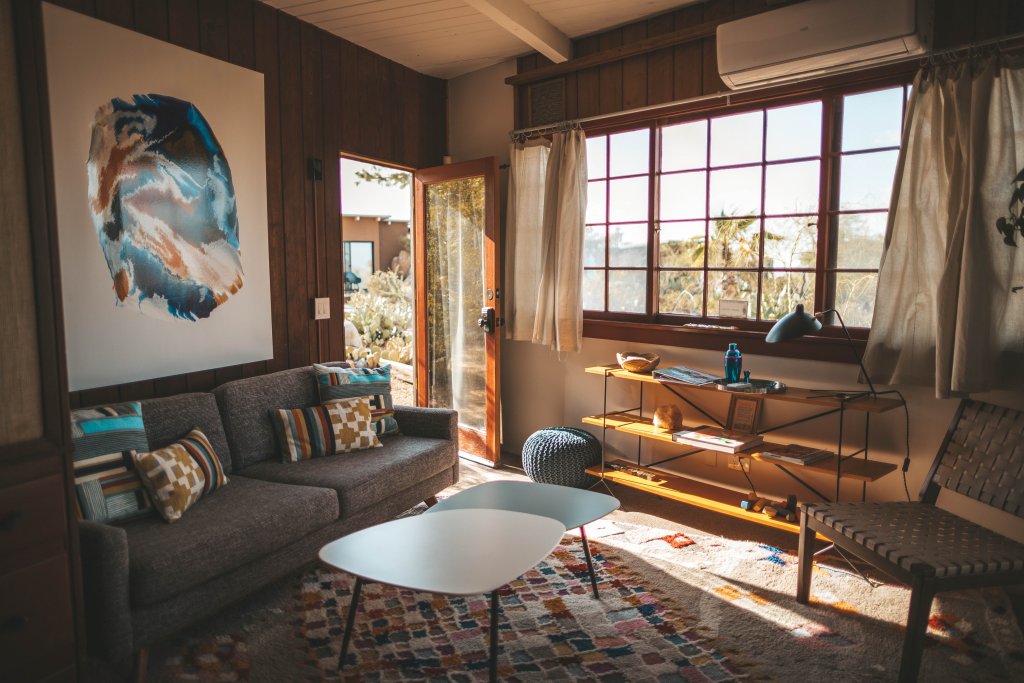If you’re looking to add some extra warmth and comfort to your living room, using an area rug from San Francisco Store would be a great way to do it. Not only do they add color and personality to the room, but they can also help protect your flooring from wear and tear. In this article, we’ll show you how to choose the right rug for your space and some tips on how to use it effectively. Keep reading to learn all about how to use an area rug in your living room.
What Is an Area Rug?
An area rug is a piece of floor covering that is usually smaller than the total floor space. Area rugs often work with living room furniture to define living spaces within larger rooms, such as defining a conversation area in a living room or delineating a dining area in a great room. Area rugs can also help protect your floor from damage while complementing the flow and style of your living room.
If you want to understand what is the difference between carpets and rugs, read the exhaustive material on this topic: Rug Vs Carpet (All The Differences).
How to Choose the Right Size Area Rug
The size of your area rug should be dictated by the size and layout of your living room. If you have a large living room, you can choose a bigger rug that will cover most of the floor space. If you have a smaller living room, or if you want to define a specific area within your living room, you can choose a smaller rug. It’s essential to leave at least a few inches of flooring around the rug’s perimeter to keep your home from feeling cluttered.
People tend to choose area rugs that are too small more often than too big ones. An area rug that’s too small looks awkward and out of place in a large room. An oversized area rug could be trimmed and hemmed to fit the space. When it doubt, go big!
One of the primary goals is to cover all of the high-traffic areas. When people pass through the living room, they should have one foot on the rug and one foot on carpet, tile, or hardwood. It feels lopsided and looks awkward. If your rug can’t adequately cover a walking aisle, then consider a smaller option.
How to Choose the Right Shape Area Rug
When it comes to shape, you can choose from various options. Rectangular rugs are the most popular, but you can also find square, round, and oval area rugs. If you have a large living room, you might consider using two smaller rugs instead of one large one. This can add visual interest and break up the space.
When selecting a shape, be sure to consider the layout of your living room. If you have a lot of furniture in rectangular shapes, a rectangular rug will complement the space nicely. A rounded rug can be helpful if you’re trying to create a living room that’s geared more towards conversations than watching TV.
How to Coordinate Your Rug With Your Flooring
Your area rug should coordinate with the flooring in your living room. If you have hardwood floors, choose a rug that doesn’t cover up too much of the wood. You want the two materials to complement each other, not compete for attention. You can’t place a rug on a hardwood floor or tile without a non-slip protective layer beneath it. Choose non-slip pads made of materials that won’t damage your floors.
Choose a rug that matches the carpet colors already in your living room. Neutral carpet patterns can be paired with busier rugs and vice versa.
How to Arrange Furniture Around Your Rug
Once you’ve selected an area rug, it’s time to start arranging your furniture. If you have a lot of furniture, start by placing the most prominent pieces first. Then, use the smaller pieces to fill in the space around the bigger ones. Leave a few feet of space between each piece of furniture and the edge of the rug. If you don’t, your furniture will cover up the rug, and the aesthetic will be lost.
An area rug doesn’t necessarily have to go in the exact center of the living room. The goal is to ensure that there’s an equal floor space on every side of the rug. This way, all of your furniture can fit around it while maintaining a clean, organized look.
How to Prevent Furniture Indentations In Your Rug
Over time, furniture can leave indentations in your area rug. This is especially true if you have a thick rug and delicate furniture. There are a few things you can do to prevent this from happening.
Use furniture coasters or placemats to protect your rug from indentations. You can also rotate your furniture every few months to evenly distribute the weight. This will help keep your rug looking fresh and new for longer.
Spruce Up Your Living Room With an Area Rug
Area rugs can be a great way to add some color and style to your living room, but choosing the right size rug and arranging your furniture correctly around it is essential. If you don’t want to deal with the hassle of indentations in your rug, we recommend using furniture pads to protect your investment. With these tips in mind, make the best use of area rugs in your home and enjoy their beauty and comfort for years to come.

